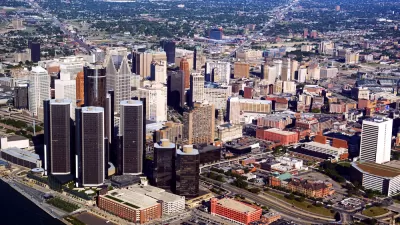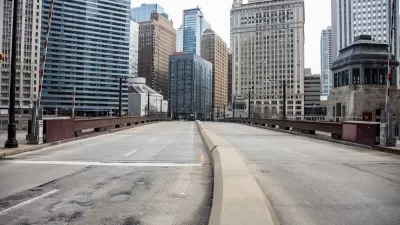Central districts have been surging back since the 1980s. But in most cities, the upper third of earners still favor outlying areas and are underrepresented closer to downtown.

In a piece for City Observatory, Daniel Hertz discusses data from a recent study on the changing demographics of American downtowns. The researchers "measured what percentage of people within three miles of their city's central business district lived in a Census tract that was in the top third. Unsurprisingly, in almost every city, that percentage increased dramatically between 1980 and 2010." The article includes a chart demonstrating that shift.
But that story, which has become accepted canon, still doesn't reflect reality for most cities. From the article: "Still, despite all the progress American central cities have made in economic development, it's important to note that most [central downtown] areas remain disproportionately poor. Even in 2010, cities where upper-income neighborhoods were underrepresented in central areas outnumbered those where upper-income neighborhoods were overrepresented by 32 to 17."
Nevertheless, the data shows a clear trend toward concentrated downtown wealth. Hertz notes how that trend depends on the young, educated demographic. "We were also struck by how much overlap there was between the Cleveland Fed's data and our findings from City Observatory's Young and Restless report late last year."
FULL STORY: More evidence on the changing demographics of American downtowns

Alabama: Trump Terminates Settlements for Black Communities Harmed By Raw Sewage
Trump deemed the landmark civil rights agreement “illegal DEI and environmental justice policy.”

Study: Maui’s Plan to Convert Vacation Rentals to Long-Term Housing Could Cause Nearly $1 Billion Economic Loss
The plan would reduce visitor accommodation by 25% resulting in 1,900 jobs lost.

Planetizen Federal Action Tracker
A weekly monitor of how Trump’s orders and actions are impacting planners and planning in America.

Waymo Gets Permission to Map SF’s Market Street
If allowed to operate on the traffic-restricted street, Waymo’s autonomous taxis would have a leg up over ride-hailing competitors — and counter the city’s efforts to grow bike and pedestrian on the thoroughfare.

Parklet Symposium Highlights the Success of Shared Spaces
Parklets got a boost during the Covid-19 pandemic, when the concept was translated to outdoor dining programs that offered restaurants a lifeline during the shutdown.

Federal Homelessness Agency Places Entire Staff on Leave
The U.S. Interagency Council on Homelessness is the only federal agency dedicated to preventing and ending homelessness.
Urban Design for Planners 1: Software Tools
This six-course series explores essential urban design concepts using open source software and equips planners with the tools they need to participate fully in the urban design process.
Planning for Universal Design
Learn the tools for implementing Universal Design in planning regulations.
Caltrans
Smith Gee Studio
Institute for Housing and Urban Development Studies (IHS)
City of Grandview
Harvard GSD Executive Education
Toledo-Lucas County Plan Commissions
Salt Lake City
NYU Wagner Graduate School of Public Service





























